#dal khichdi recipe
Text
Healthy Dal Khichdi | Dal Khichdi Recipe
Please like share subscribe to my YouTube channel🙏🙏
#dal khichdi#dal khichdi recipe#restaurant style dal khichdi#gujarati dal khichdi#viral#trending#rice recipes#indian recipes#indian food
3 notes
·
View notes
Text
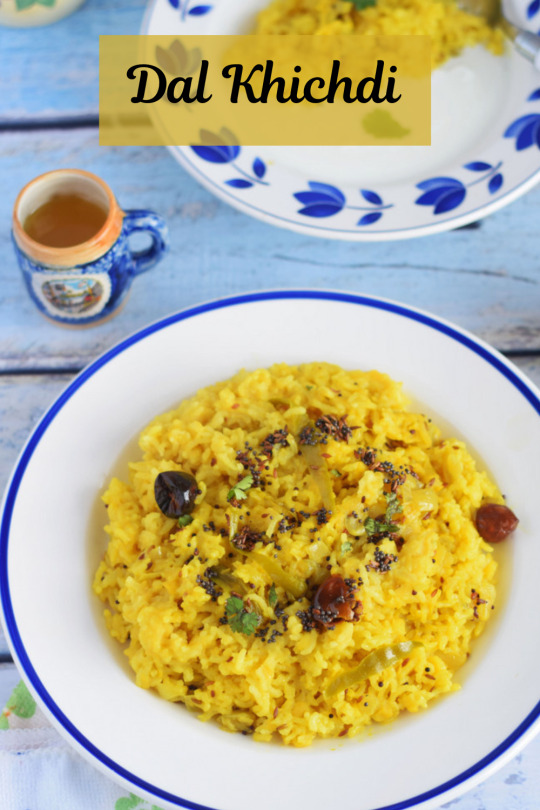
Indian Dal Khichdi
Dal Khichdi is a traditional Indian dish, which is cooked by mixing moong dal (split green gram) and rice. It commonly uses ghee, and is often served with vegetables, spices, and tadkay. This dish is not only nutritious but also easy to digest, hence people prefer it as a comfort food.
#dal Khichdi#cooking#foodie#food photography#recipe blog#recipes#snacks#kitchen#viralpost#home cooking#recipe#indian recipes
0 notes
Video
youtube
Simple Homemade Masoor Dal Khichdi Recipe | How To Make Masoor Dal Khich...
1 note
·
View note
Text
Palak Chicken, Palak Egg Curry And More: 5 Palak Recipes To Try For Dinner
Palak Chicken, Palak Egg Curry And More: 5 Palak Recipes To Try For Dinner
With the winter season upon us, one thing that we all look forward to is food that is comforting and will help build our immunity against the cold winter. If you look around and see, you’ll find a wide variety of seasonal fruits and vegetables being sold in your local markets. And one such seasonal veggie that is extremely popular during the winter season is palak (spinach). This green leafy…
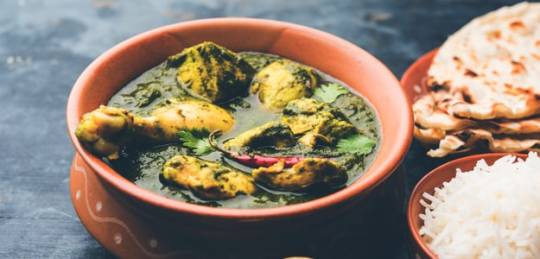
View On WordPress
#dinner recipes#palak#palak chicken#palak dal khichdi#palak paneer#palak recipe#palak recipes#palak recipes in winter#palak soup recipe
0 notes
Photo

Dhuli Moong Dal Ki Khichdi Recipe
0 notes
Text
Moong Dal khichdi
Today I am sharing with you the recipe of Dalia(frumenty) Moong Dal Khichdi(porridge). The recipe has lots of vegetables as well.
Moong dal and Dalia is good source of high proteins and fibre, which are very important for our body.
You can also eat in breakfast, lunch or dinner. It is very light to eat. So what are you waiting for, Try this if you like to eat.
Moong Dal khichdi step by step
Ingredients:
1-Daliya(Frumenty) 1/2 cup
2-Split Moong dal 1/3 cup
3-Oil/Ghee 2 tbsp
4-Potatoes(chopped) 3
5-Carrot (chopped) 1/3 cup
6-Green Peas 1/4 cup
7-Salt to taste
8-Turmeric Powder 1/2 tsp
9-Water 3 cup
For Seasoning:
1-Oil/Ghee 2 tbsp
2-Cumin 1/2 tsp
3-Onion 1
4-Tomatoes 2
5-Green chili (chopped) 1 tbsp
6-Ginger(chopped) 1 tbsp
7-Black Pepper 1 tsp
8-Cumin Powder 1/2 tsp
9-Coriander Powder 1 tsp
10-Kashmiri Red Chili 1 tsp
11-Garam Masala 1 tsp
12-Fresh Coriander
Method:
1-Dalia(frumenty) and Moong Dal washed 3-4 times with clean water.
2-Heat oil in the pan, now add vegetables and saute for 2 mins.
3-Now add Dalia and Moong Dal along with water, salt, turmeric and cook for 8-10 mins on low flame.
For Seasoning:
1-Heat oil in the pan then add Cumin, chopped Onions, Green Chilies, Ginger and saute for 1min.
2-Now add all the Spices under Seasoning 7-11.
3-Its time to add Tomatoes and cook for 30 secs.
4-Add Cooked Dalia and fresh Coriander.
Khichdi Is ready to eat, Enjoy this recipe with your loved ones.

0 notes
Text
save me moong dal khichdi. save me. Priya Krishna's moong dal khichdi recipe save me
2 notes
·
View notes
Note
Ooo so these aren't ,,technically” a soup (potato potato, you know) but Indian dishes of soup like consistency <3 you can just eat them by the bowl or get bread/rice with the dish
There’s spinach cooked in green gram (moong dal palak), Sanjeev Kapoor’s recipe works out great for it; just use 1 tablespoon of oil and if you’re using green chillies, chop them, but if its red chillies leave them whole. Also, once you’re done taking it off the flame, take a hand blender to it and make it smooth, you can add water as needed after the blender to make it the consistency you want(if you added too much water, you can just put it back on the flame and let it simmer for some time). After this, add the lemon juice <3 you can have this with bread or rice or just by itself :)
The recipe is in the description of the video
Then there’s khichdi, the dish everyone has when they’re sick. You can go by literally any recipe for khichdi, it’s a really simple dish, I don’t think recipes would differ…. But just check if it’s not dry khichdi (you shouldn’t be able to make out individual rice)
One last dish I would recommend is Pav bhaji- but only the bhaji, you can have it without the bread <3 we normally put potatoes, tomatoes, onions, cauliflower, peas, okra and capsicum in our recipe.
This is a good recipe (pls don’t add the food colouring they’re kinda crazy not everyone in Mumbai adds that) but I understand if if the spices are difficult to obtain (kasuri methi= dried fenugreek leaves) If there’s a store near you selling spices for south asian people, they would have this and also the pre mixed Pav bhaji masala.
Dental surgeries are a PAIN I hope you feel better soon kit <3
ahhh what a resource this is!! i gotta admit i do not have a lot of exposure to indian food, but i will have to try because a lot of stuff looks delicious especially the recipe i found for khichdi!
and moong dal palak is on my shortlist--the video makes it look so good!!!
thank you so much! i started browsing through Hebbar's Kitchen--it feels like you've unlocked a whole new world of food i am going to get so into <3 i live really close to an international store with a huge south asia section-- hopefully i can do this justice!!
#asks#thank you again!#i know they're not soup but soup adjacent!#they look soft for the mouth#my friend is making me risotto rn and that'll be soft enough that i will be able to eat it
7 notes
·
View notes
Text
"Indian traditional food KHICHDI"
Ingredients for "KHICHDI'"
Basmati rice, one cup
split yellow lentils, 1/2 cup yellow moong dal
2 tablespoons of oil or ghee (clarified butter)
1/4 cup cumin seeds
one tablespoon of mustard seeds
Asafoetida (hing), half a teaspoon
1 small onion, diced finely
1-2 green chilies, sliced (tune the amount of heat to your taste
a grating of ginger, 1 inch long
minced garlic from 2 to 3 cloves (optional)
One-half teaspoon of turmeric powder
1 teaspoon dried coriander
one-half teaspoon of cumin powder
Garam masala, half a teaspoon
Salt as desired
5 to 4 cups of water
chopped fresh coriander leaves as a garnish (optional)
Click this link for further and more recipe:-
2 notes
·
View notes
Note
so this could a personal question and i completely understand if you dont want to answer but i saw that you said you married an indian guy and i just wanted to know what is some of your favourite indian things to eat/make and are some foods you dislike?
for me growing up and now, bitter gourd and lady fingers and okra. i HATED when my mum used to make it but i loved when she made papdi no lot even now when i see her she packs extra for me to take home.
so my experience is colored slightly bc my husband’s family are from gujarat, i’m not sure where your family/home cuisine is or if you’re familiar with gujarati cuisine (i’m assuming you are because of the papdi no lot?)
but stuff i make regularly and eapecially enjoy are: khichdi with khadi (the one i make at home is a masala khichdi), chole, bhartika nu shaak (or bateta nu shaak depending on your dialect), and pav bhaji (that one isn’t super guju but it’s good haha). i can also make some restaurant/punjabi style stuff like saag paneer or khadai paneer, or the big chicken dishes (makhani or butter chicken). when i cook this kind of stuff the fam also likes me to make papad and onion salad and the fixings (but not attanu i’m too scared to try that so i have to rely on storebought or my MIL if she’s made it recently)
i also never used to like okra but my MIL makes a really good dry fried kind with spices inside? it’s hard to learn to cook from her because it’s not like a recipe or anything, she just knows how much to add to things, and that’s one i’ve never been able to recreate properly 😭 when i do it the texture is always awful. i also like her pani puri and dal bhaat but i’ve never tried to make those myself for some reason. and i can make bhakri but i can’t roll them out the right way to satisfy her rip
honestly the only things i really don’t like are the desserts, they are all way too sweet for me. i also don’t really like idli bc the texture is just not good to me. but most stuff i will eat or at least i’m willing to try, even stuff his family don’t think i’ll like (the first time i ate mag and also papdi no lot the faces were like 😮)
#questions#anonymous#i think i’ve posted my spice drawers here before but they are like. fairy intense
10 notes
·
View notes
Text
Masala Khichdi Recipe with Veggies
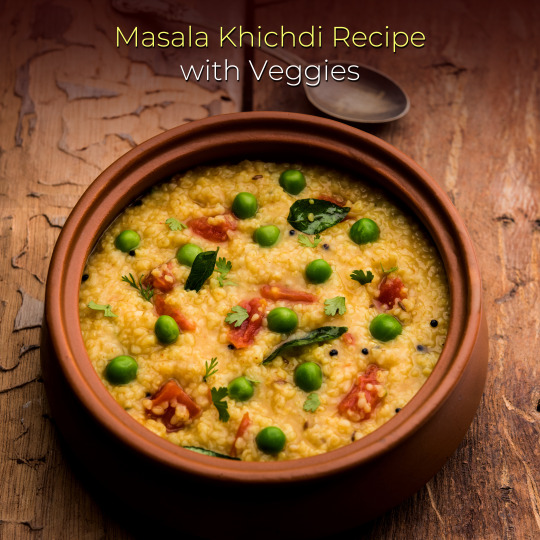
Try our Masala Khichdi, a delicious combination of rice and dal, with vegetables. It's excellent when cooked with the best organic spices for general health and digestion.
Instructions:
After soaking for an hour, thoroughly rinse the rice and yellow mung dal.
Grind 1 tablespoon seeds of coriander and fenugreek.
1 tablespoon Ginger powder, salt, and grinded seeds are added to warm ghee or mustard oil.
Put vegetables in a 15–20 minute simmer.
Simmer the rice, dal, and ½ teaspoon turmeric powder for ten to fifteen minutes. Season with black pepper powder, salt, and coriander.
Serve in a bowl with lime juice.
Conclusion:
When combined with the best organic spices, this dish is nutrient-dense and health-promoting.
0 notes
Text
From Creamy to Spicy: Exploring the Diverse World of Dal Varieties
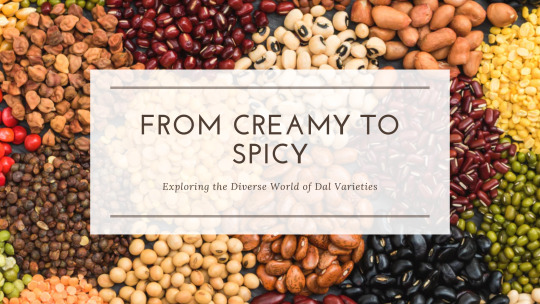
Dal, a term encompassing various dried pulses, holds a revered place in Indian cuisine. Whether simmered to creamy perfection or infused with aromatic spices, dal dishes offer a comforting and nutritious meal for millions around the globe. Let's delve into the colorful tapestry of dal varieties, from humble origins to tantalizing recipes.
Introduction
Dal, derived from the Sanskrit word "dal" meaning split, refers to dried pulses like lentils, peas, and beans. It serves as a cornerstone of Indian cooking, providing a substantial source of protein for vegetarians and meat-eaters alike. The adaptability of dal in various recipes underscores its culinary significance.
The Origins of Dal
Historically, dal has been a dietary staple in the Indian subcontinent for millennia. Its consumption dates back to ancient civilizations, evolving alongside culinary practices and agricultural advancements. Over time, dal has integrated into diverse regional cuisines, becoming an indispensable ingredient in countless dishes.
Nutritional Benefits
Dal stands out for its nutritional profile, boasting high levels of protein, fiber, vitamins, and minerals. Its low glycemic index makes it an ideal choice for regulating blood sugar levels and promoting satiety. Incorporating dal into one's diet can contribute to overall health and well-being.
Common Types of Dal
Masoor Dal
Masoor dal, known for its quick-cooking nature, boasts a reddish-orange hue and a nutty flavor. It lends itself well to soups, stews, and savory lentil cakes.
Moong Dal
Moong dal, revered for its delicate texture and mild flavor, is a favorite in Indian households. Whether in dals, khichdis, or desserts like moong dal halwa, it adds a delightful creaminess to dishes.
Toor Dal
Toor dal, also known as arhar dal or pigeon peas, features prominently in South Indian and Gujarati cuisine. Its robust flavor and ability to thicken gravies make it indispensable in dishes like sambar and dal tadka.
Chana Dal
Chana dal, derived from split chickpeas, offers a hearty texture and a slightly sweet taste. It finds its way into savory snacks, dal preparations, and delectable desserts like besan ladoo.
Urad Dal
Urad dal, characterized by its black skin and creamy white interior, is a staple in Punjabi cuisine. Whether in dal makhani, vadas, or idlis, it imparts a rich and velvety consistency to dishes.
Regional Variations
Across India, dal preparations vary widely, reflecting regional tastes, ingredients, and cooking techniques. From the spicy dal fry of North India to the tangy sambar of South India, each region showcases its unique spin on dal dishes.
Cooking Techniques
Traditional methods of cooking dal involve slow simmering with aromatic spices like cumin, coriander, and turmeric. However, modern culinary practices have introduced innovations like pressure cooking and slow-cooker recipes, making dal preparation more convenient than ever.
Dal in Global Cuisine
Beyond Indian borders, dal has found its way into international kitchens, inspiring fusion dishes that marry Indian flavors with global ingredients. From dal tacos to dal risotto, chefs worldwide continue to experiment with this versatile ingredient.
Dal Recipes
Dal Tadka
A quintessential Indian comfort food, dal tadka features tempered spices like mustard seeds, cumin, and dried red chilies, adding a burst of flavor to the creamy dal base.
Dal Makhani
Indulge in the creamy goodness of dal makhani, simmered with butter, cream, and a melange of spices, resulting in a rich and velvety texture that's hard to resist.
Sambar
A South Indian classic, sambar combines toor dal with an array of vegetables and tangy tamarind, creating a hearty and satisfying dish served with rice or idlis.
Dal Fry
Dal fry, a popular North Indian dish, features lentils cooked to perfection and tempered with onions, tomatoes, garlic, and a blend of aromatic spices.
Dhansak
Hailing from Parsi cuisine, dhansak combines lentils with meat, vegetables, and spices, resulting in a savory and aromatic stew enjoyed with rice or bread.
Conclusion
In conclusion, the diverse world of dal varieties offers a culinary journey rich in flavor, nutrition, and cultural significance. From creamy to spicy, each dal brings its unique charm to the table, celebrating the tapestry of Indian cuisine and its global influence.
Unique FAQs
Can dal be a complete protein source on its own?
While dal is rich in protein, it's advisable to combine it with grains like rice or wheat for a complete amino acid profile.
Are there any gluten-free dal options?
Yes, most dals are naturally gluten-free, making them suitable for individuals with gluten sensitivities or celiac disease.
How can I enhance the flavor of my dal dishes?
Experiment with different spices, herbs, and seasoning techniques to elevate the taste of your dal preparations.
Are there any quick-cooking dal varieties for busy weekdays?
Yes, masoor dal and moong dal are known for their quick-cooking nature, making them perfect for busy schedules.
Can dal be frozen for future use?
Yes, cooked dal can be portioned and frozen for later use, ensuring convenience without compromising taste or quality.
0 notes
Text
Ghee in Indian food: Exploring Its Role in Traditional Dishes

Ghee is a golden potion that is used to improve the flavor and richness of many Indian dishes, adding energy to the bright variety of Indian cooking. Let's explore the significance of ghee and acknowledge its enduring presence in our culinary heritage as we set out to explore its role in traditional Indian cooking.
Understanding Ghee:
Clarified butter, or ghee, is a highly esteemed ingredient in Indian kitchens and homes. It is a representation of tradition, wholesomeness, and purity rather than just a culinary ingredient. Ghee, which is created by simmering butter until the milk solids separate and are removed, has a high smoke point and a rich, nutty flavor that make it perfect for a variety of cooking techniques.
Ghee's qualities include a long shelf life, resistance to rancidity, and compatibility with high-heat cooking techniques. Because of its high smoke point, it's perfect for deep-frying, cooking, and frying without burning or releasing toxic compounds.
To comprehend ghee, one must acknowledge its cultural significance in a variety of customs and cuisines, as well as its function as an adaptable cooking fat with a distinctive flavor profile.
The Heart of Indian Cooking:
Ghee is more than just a cooking fat in Indian cooking; it is the essence of many recipes. Ghee adds its distinct taste and smell to everything, from rich desserts to flavorful curries, taking every dish to new heights. Its flavorful, buttery taste adds a delightful richness to sweets and desserts and increases the flavors of savory foods.
The Role of Ghee in Traditional Dishes:
Dal Tadka: Dal Tadka is a common dish in Indian homes, but it isn't complete without a creating dollop of ghee. Ghee gives the dish a silky texture and increases the flavor, making it impossible to resist.
Biryani: Ghee is mostly responsible for the indulgence of biryani, the culinary masterpiece of India. The aroma of the rice that has been infused with ghee and the richness it adds make biryani a culinary masterpiece.
Gajar Ka Halwa: Ghee gives gajar ka halwa, a soul-warming winter treat, its nice texture. Carrots caramelize in ghee due to the slow cooking process, making for a rich, fragrant, and incredibly decadent dessert.
Parathas: Whether stuffed with potatoes, paneer, or vegetables, parathas cooked in ghee are a comfort food like no other. The golden crust, crisp yet tender, speaks volumes of the magic of ghee.
Khichdi: Khichdi, a hearty one-pot dish consisting of rice and lentils, acquires its essence from the use of ghee. Ghee's richness makes this a nutritious and healthful dish, as it not only increases flavor but also facilitates digestion.
Roti and Naan: Indian breads like roti and naan are often brushed with ghee before serving, imparting a glossy sheen and a buttery flavor. This simple addition enhances these modest staples to a whole new level of indulgence.
Pakoras and Fritters: The crispiness of pakoras and fritters owes much to the frying medium, and ghee provides just the right balance of richness and lightness. It lends a delicate flavor without overpowering the taste of the vegetables or batter.
Mithai (Sweets): From laddoos to barfis, Indian sweets are incomplete without the addition of ghee. Its richness enhances the texture and mouthfeel of sweets, while its nutty aroma adds depth to the flavor profile.
Sambar: A staple in South Indian cuisine, sambar gets its distinct flavor from the tempering of spices in ghee. The addition of ghee at the end of cooking enhances the aroma and ties together the flavors of this hearty lentil stew.
Kheer: A creamy rice pudding delicacy, kheer derives its velvety texture and rich flavor from the use of ghee. The slow cooking process allows the rice to absorb the ghee, resulting in a dessert that is decadent yet light on the palate.
These examples underscore the versatile and essential role of ghee in traditional Indian dishes, where its presence not only enhances flavor and aroma but also contributes to the overall sensory experience and nutritional value of the cuisine.
Haveli Desi Ghee: Pure Goodness, Naturally Yours
When it comes to traditional Indian cooking, ghee selection is crucial. This is where Haveli Desi Ghee, a company committed to maintaining the genuineness and purity of this golden potion, comes into play.
Crafted with care and dedication, Haveli Desi Ghee is a celebration of 100% natural ingredients sourced from grass-fed cows in mineral-rich areas across India. Our commitment to quality means that our ghee is free from preservatives. With Haveli Desi Ghee, you not only experience the true essence of traditional Indian cooking but also embrace a product that is ethically and sustainably sourced. Every spoonful of our ghee is a testament to our respect for nature and our dedication to providing you with the best.
Conclusion:
As we conclude our exploration of ghee in Indian cuisine, let us remember that its significance goes beyond flavor and aroma – it embodies tradition, heritage, and a deep-rooted connection to our culinary roots. With Haveli Desi Ghee, you not only enrich your dishes with pure goodness but also honor the timeless legacy of Indian cooking.
So, the next time you embark on a culinary adventure in your kitchen, remember to reach for the golden jar of Haveli Desi Ghee – where tradition meets purity, and every dish is a celebration of flavor and heritage.
0 notes
Video
youtube
Chana Dal Pulao Recipe | Chana Dal Khichdi in Cooker | Traditional Punja...
0 notes
Text
Diabetes Diet: How To Make Palak Dal Khichdi For A Wholesome Meal
Diabetes Diet: How To Make Palak Dal Khichdi For A Wholesome Meal
Who doesn’t love khichdi? This one-pot meal holds a special place in our hearts. It’s super easy to make and is brimming with various health benefits too. Whether you’re craving something comforting or do not have sufficient time to cook an elaborate meal – a hot bowl of khichdi always comes to our rescue! However, if you’re someone who is suffering from diabetes, keeping track of food items that…
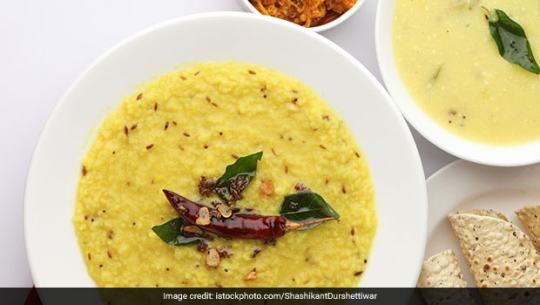
View On WordPress
#diabetes diet#diabetes foods#khichdi#khichdi for diabetes#khichdi recipes#palak dal khichdi#palak dal khichdi recipes
0 notes